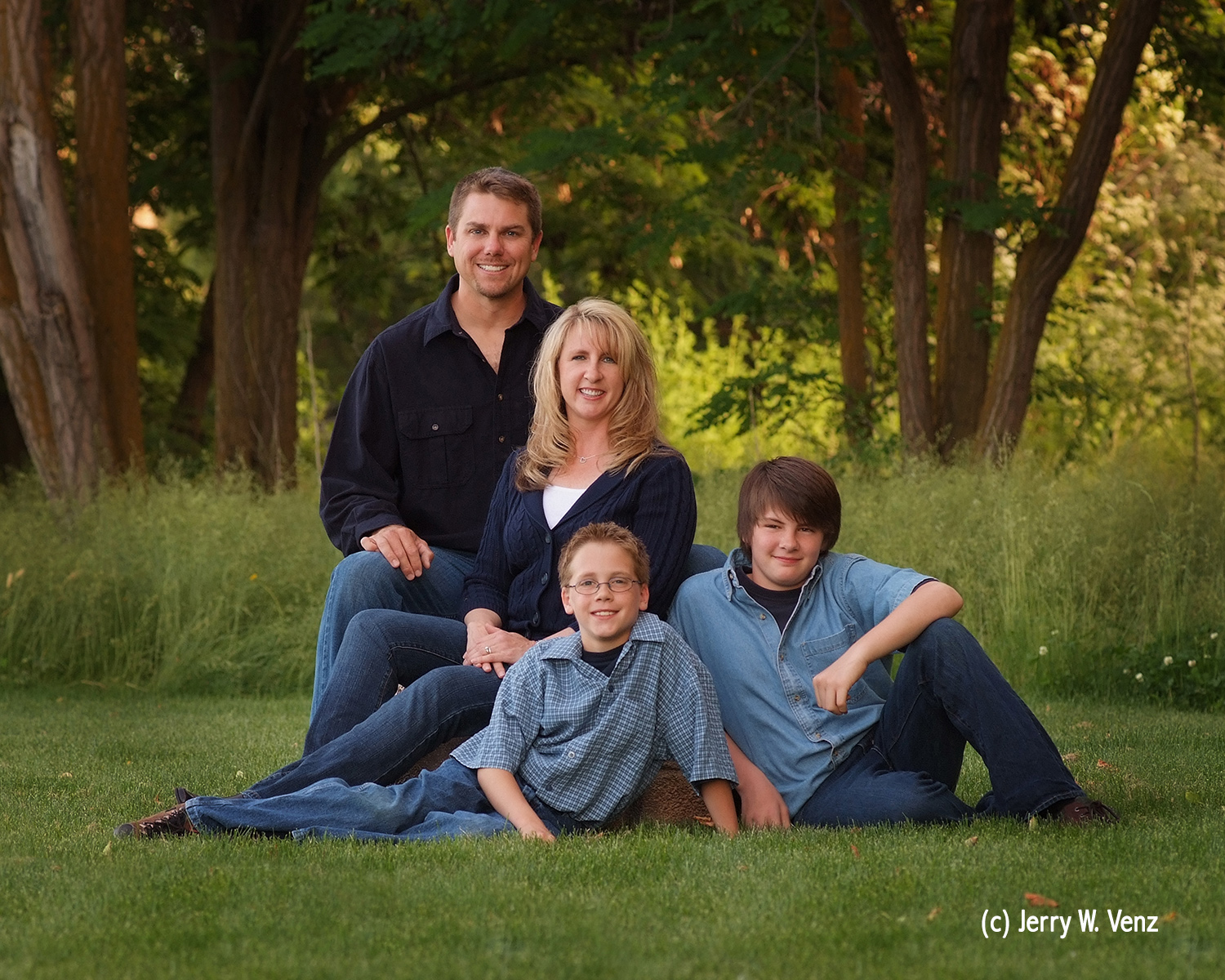If you're just joining in on this topic here's the list of the 5 Types of Natural Light:
1) Direct sunlight (Mid-Day)
2) Fully overcast sky
3) Blue Sky (indirect sun)
4) Sunset (magic hour) or sunrise
5) Window Light (or open door way)
Now, picking up where I left off;
4) Sunset (Magic Hour) or Sunrise:
At the end of Part 2 I covered Sunset, so I'll move on to Sunrise and Morning light. Sunrise is not quite a Magic Hour, but sunrise can offer great light. You just can't count on it like sunset's magic hour. When you do get great sunrise light it's very temporary. As the sun comes up the higher the sun the worse the light becomes. So you may only get 15 minutes of great light. This is why I prefer sunset light--here in Idaho I can start photography in some of my locations 3 hours before sunset and with our latest sunset, in the summer, at 9:30pm, we can do a lot of photography in that window of opportunity. The best thing about sunset light is that the light just gets better and better as the sun goes down!
True sunrise is too early for my portrait clients, so I looked for a morning location that had lots of shade at around 8 to 8:30am. I found this location within walking distance of our home. It has three large trees making nice shade as the sun comes up behind them. My camera is pointing toward the rising sun, putting the light behind my subjects, just as I do with my sunset locations.
 |
| f6.3 @ 1/125 sec., ISO 400 captured at 8:01am |
5) Window Light (Open Doorway, etc.)
This is one of my favorite sources for portrait light. I could write a whole blog (I think I already have!) on this one type of light. This kind of nice directional light can be had not just at a window--you can create this light with an open door at someone's home or by opening the big doors of a barn or out building. The key to great window light portraits is to have your subject close to the window or doorway and NOT show the window or doorway. I believe that the window or doorway is a LIGHT SOURCE and NOT a subject! In studio photography we don't show the soft box in our portraits--so why show the source here? Besides offering a distraction from your subject you then add a big hot spot in the scene that again messes with dynamic range!
On most of our weddings these past 25 years I've sought to do our bride's portraits by window light. Here's an example of one of our bridal portraits using an open doorway.
I placed her about 4-feet from the doorway and had her bring her nose towards the light source until I could see the light just touch her left eye. That eye became the near eye to my camera and that's where I focused.
 |
| f3.5 @ 1/160 sec., ISO 800 |
One thing it is good for is soft, overhead, top light, which is ideal for Horizontal subjects like cars. The mostly horizontal shiny surfaces of cars are ideal for a soft top light. That's why when commercial photographers photograph cars in the studio they use huge soft boxes suspended over the car.
The reason this kind of light is so poor for portraits is that people's faces are vertical subjects and with our eyes sheltered by our brow you lose the light in the eyes when the main light is primarily top light. The image below was taken on an overcast day--you can see the clouds in all the windows. It's a very nice soft light for the car's reflective surfaces. In addition, the background grass area has been darkened by the gobo (light blocking) effect of the trees giving me good separation of the car from the background.
 |
| f11.0 @ 1/250 sec., ISO 400 |
As usual should you have any questions or comments don't hesitate to make them. 'Til next week…
Author: Jerry W. Venz, PPA Master Photographer, Craftsman, Certified
Training site: http://www.LightAtTheEdge.com




